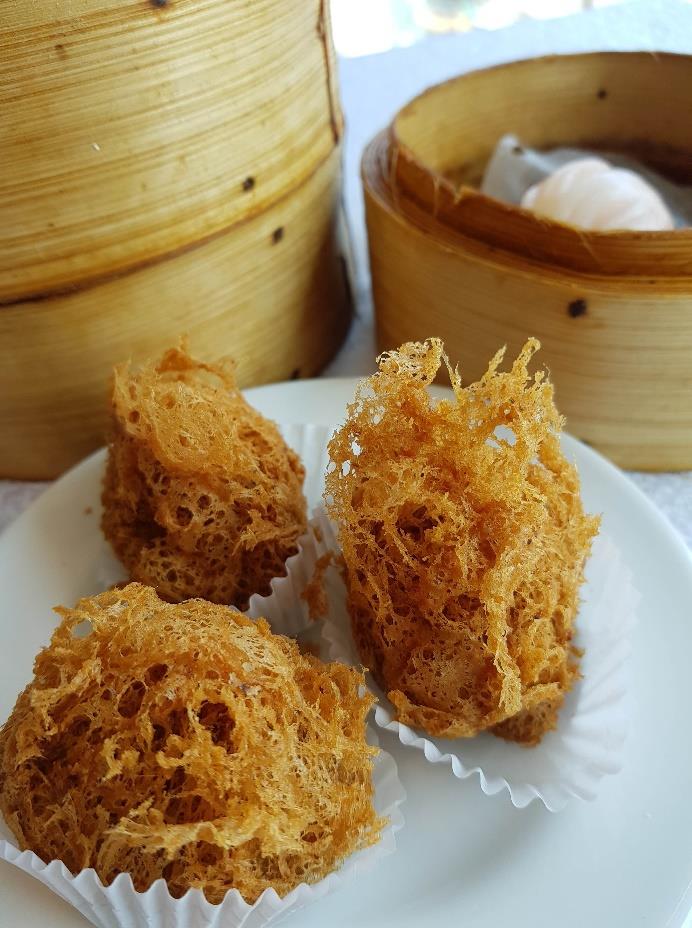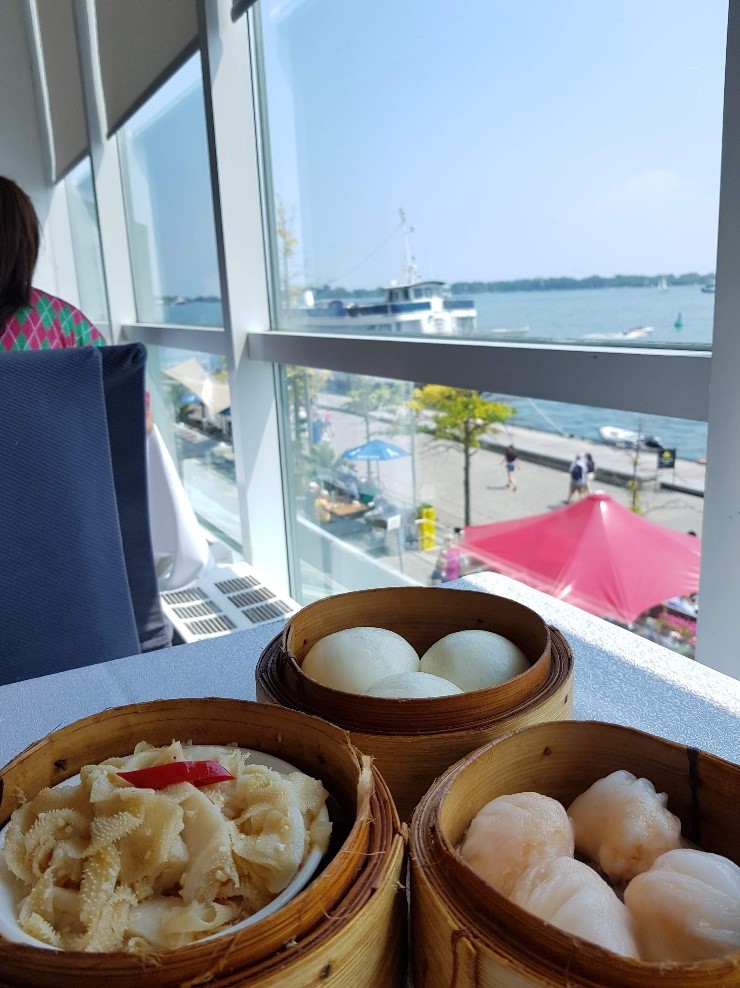

Yum cha is always my family’s staple. We would head to a Chinese restaurant during the weekends, and after being seated at one of the round tables, the waiter would ask which kind of tea we would like. I have no idea how this started, but our family has been opting for Sau-Mei tea for as long as I could remember. I recalled how much I enjoyed rinsing the utensils and passing them to everyone. And found a sense of gaiety in stacking the bamboo baskets up, just like playing with Legos. Being a part of the daily routine as a Hong Konger, I did not know that yum cha was so vital to me until I travelled to Toronto alone when I was eighteen.
As a foodie, I indulged myself in decent Western cuisine during the first few days of the trip. Flaky croissants to start the day. And a cup of coffee with slight acidity would complement the pastry nicely. Fish and chips were fascinating; the fish covered in crispy batter was just something I had not tried before in Hong Kong.
But out of my surprise, I found myself craving for Chinese cuisine on the fourth day of the trip, so I went to one of the best dim sum places in Toronto. As claimed, it was the Pearl Harbourfront Chinese Cuisine. It sits at the harbour of Toronto, where I could view the beautiful scenery as I had my meal.
I was delighted to have some of my favourite dim sum there. Steamed duck egg-yolk buns came first. My hand could not wait to approach one of those cute white cushions sitting in the bamboo basket. But I snatched my hand away as I touched it. When buns are as hot as a stove like that one was, you can immediately tell that they were freshly steamed, and that was the perfect time to have them.
As the buns cooled down just a little for me to pick one of them up, I gently tore an opening through the little white cushion. I tore even more, and the golden lava leaked out so smoothly. I sucked the liquid and it just flowed inside my mouth and brought the flavours all around - the unique combination of sweet and savoury. The duck egg yolks contributed to this savoury taste and left a sandy texture on my tongue. The bun itself was firm, but soft. Making the perfect bun is never an easy thing to do; you need the perfect ratio of water, flour, and yeast. Nicely knead them into a smooth dough, set them aside, and then shape them. Allow these little cushions to have a nice sauna inside the bamboo baskets and they will be plumped with energy.
Usually, a basket comes with three buns, and I would always separate a bun into two really carefully, so I won’t waste any of the precious golden filling. Half for me, half for grandma, so I could save my stomach for the rest of the dim sum as well.
Next up was wu gok (deep-fried taro dumpling puffs). My favourite deep-fried dim sum. The puffs were crispy and flaky. As I picked one of them up without precise control of power, the puff shattered into pieces. I took a small piece of the deep-fried taro and it crunched as I bite. But when I ate it with the filling made with sautéed pork and shitake mushrooms, the taro quickly melted from the moisture of the filling and they blended nicely together.
I was actually surprised with the fact that the restaurant served even better dim sum dishes than local ones in Hong Kong. It made me jolly to satisfy my Chinese food cravings.
But this sense of delight only lasted for the first two pieces of taro puffs and only one steamed bun. My abdomen gradually bloated with the oiliness of the dim sum. This time, even the tea could not cope with the heaviness. Being stuffed by the heavy foods, I came to experience an epiphany of why dim sum usually came in a few pieces within a bamboo basket.
I once heard from my fellow classmate from the States that dim sum is like sushi, where both are served in bite sizes and has a wide variety. Nevertheless, we can have an assorted sushi set with one serving of each, while we could never have an assortment of dim sum for one person only. Dim sum, or I should say yum cha, is dedicated for the family.
When I could only finish two dishes by myself, leaving an unpleasant feeling of being filled to the brim, I realised that for yum cha, it is not the flavours that mattered. It is the meaning it holds that mattered. It is when I can have one of the four buns, one of the four puffs, one of the dumplings, one of the meatballs…It is when I can share them with my family members.
I came to understand that yum cha is not just a meal. It carries the Chinese culture of connecting people and symbolizes an essential routine for us. It is about having time to gather around. You can only tap on the table for tea when there is someone else you are enjoying the meal with, when there is something else, and someone else, who is more important than the food itself. It also carries an identity, in which I hope that I could yum cha as a daughter and a granddaughter, instead of merely a foodie.
Indeed, the two dishes I had that day were literally the best ones I could find. I was really fascinated by the fact that a non-local restaurant in Toronto can duplicate what I am used to. But when the scenery was my only companion for the meal, I was clear that even though flavours can be replicated, experiences could not. Even though flavours may travel through time and space, memories with the family cannot.
Author Bio: As a food lover, Cheryl believes that food is the ingredient of enjoying life. She is not just a foodie who indulges in the pleasure and aesthetics food gives, but is convinced that food is more than just food itself – food recalls some of her significant memories, food serves as a vehicle for her to connect with people, food often narrates some of her stories. Cheryl also loves to express her thoughts, feelings and herself as a person. This prompted her to write about food, as if keeping a food diary and recording a little episode in life.